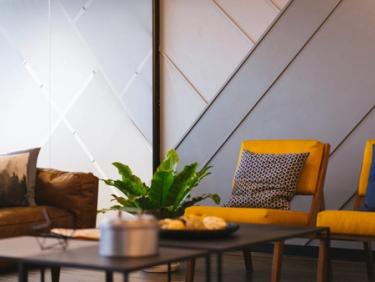Insight13 min read
Digital PR for the home and interiors sector
Sun Jun 14 2020 | Cheryl Crossley

- Insight
- Performance
- PR
- Home & Garden
Tags
Digital PR can be one of the most effective digital marketing tactics for retail or eCommerce businesses, supporting SEO visibility, traffic, sales, brand awareness and reputation.
However, as tempting as it may be to apply a “one size fits all” strategy, each sub-sector within retail and eCommerce needs a specific and focused plan, alongside an understanding of the right blend of tactics. All good PR practitioners should know that a digital PR campaign for home and interiors retailers should be different to other sub-sectors like clothing, food, or tech – yet not all of them do.
We understand the importance of an industry-considered, bespoke approach to digital PR. Our team has a wealth of experience in activating successful campaigns for home and interiors clients, and know the tactics that work. We’ve factored all this, alongside our knowledge of media, into these sector-specific recommendations.
Why do you need digital PR?
From our experience of working with home and interior brands, there are often in-house teams who are well versed in affiliate marketing, influencer marketing and traditional PR tactics like product placement. So why do you need an agency to handle digital PR too?
Whereas traditional PR typically leads to print coverage or non-linking brand citations, digital PR is, as the name suggests, centred around online publishers. It’s the sweet spot between traditional PR and SEO. Taking SEO insight on website visibility and links, combined with knowledge of the media landscape, content is designed to not only engage your audience online, but also boost your rankings for key terms.
But why should you care how visible you are online?
A few years ago, homeware eCommerce was falling behind its counterparts, like clothing and tech, in terms of online sales. This was often because customers were nervous about a high price-point furniture purchase based entirely on photos. Would it look the same? How do you return a sofa? No one wants to order an emerald green Chaise Longue to receive a lime green futon!
Thanks to the rise in popularity of smaller, more portable flat-pack furniture, a fall in shipping and delivery costs, improved returns processes and, of course, better product pictures and videos, the online furniture arena is now big business. In 2019 alone, the estimated eCommerce sales of furniture, homewares, and home décor totalled a huge £7.4 billion in the UK.
Online research, reviews, and comparisons are also incredibly important parts of a consumer’s buying journey. Today’s consumers are comfortable switching between store visits and digital channels during a single buying journey, especially if they are choosing a big-ticket item.
However, studies show that 45 percent of furniture shoppers research their purchases online, with 24 percent now choosing to make a purchase right there and then. When it comes to less expensive items like art, decorations, and homewares, that figure is thought to be even higher.
So, it’s of paramount importance that your interior or homeware brand has a strong online presence. Sticking to print media alone, or not incorporating SEO insight into your approach to digital media outreach is likely to see you falling behind the competition.
How to leverage digital PR for visibility
We know the importance of visibility, but there are certain PR tactics that work best in the interior arena.
Discover your target media through an SEO-led PR audit
Although arguably in the same business, places like Boca Do Lobo and Ikea will have very different target customers due to the nature of their product. This means their target media will also be different. Target media refers to the online publications you want to feature your products and link back to your website.
YouGov Profiles Lite is also a useful tool to find out more information about a brand’s core audience, competitors and media as a starting point. But, the best way to establish your target online media is through a digital PR, SEO-led media audit.
Using competitor analysis, SEO tools, backlink insight and a knowledge of the media landscape, we create media audits to identify gaps where our clients have yet to be mentioned. This is in terms of online editorial platforms where their competitors are already successfully engaging customers. This, along with an advice led client Wishlist of publishers, forms our target media which also feeds into our PR strategy and proposed tactics.
Look at what your target media are writing about
Once you’ve figured out who your target media are, you can understand what they are writing about online, including the type of editorial content they’re seeking and the way they gather it. Our media audits look at the most popular blogs and news pieces where competitors have been mentioned, general popular topics and pieces that have been shared regularly on social media to form a clear idea of the current landscape. A recent interior and home audit shows there are four main types of editorial content for the general, mid-level interior market at this time:
- Seasonal trends: Garden furniture and biophilic design in spring. Very visual and image led.
- Tips, tricks and expert advice on how to update your home: Again, visually led but with more of an emphasis on the expert commentary.
- Lists on top products: Best for working from home, best for dinner parties etc. This coverage often comes from affiliate links. But, by building the right relationships with the press, products can be placed with just a few high-quality images.
- Industry news: Mainly future trends, executive movement and industry changes.
There are plenty of opportunities for digital PR practitioners to insert their clients into each of these content types, which we will address below.
Create visual, interesting PR assets based on your research
There is a real art to creating a good interior design PR asset. Unlike other industries, ideas should be creative rather than formulaic. There are, however, key things to keep in mind when planning your PR ideas:
- Stay ahead of the trends: Have you noticed a surprising product selling more than usual? Is there a new colour that has captured the interest of your customers? Many of your key publications will want to position themselves at the forefront of what’s new and cool, so keep an eye on trends that you can use to create beautiful, visual content.
- Be reactive: Stay aware of what’s going on in the world. If the weather is good, people will be searching for outdoor furniture. If a big high-street chain has closed, you can comment on that. If a pop culture moment has taken over the news, see how you can respond. For example, think the Game of Thrones Iron Throne, many interior companies made that work effectively in a campaign. “Newsjacking” always gives a hook to your assets, so stay aware and reactive as best you can.
- What are your competitors doing? Can you improve upon an idea they have had? Does it spark a similar, but better idea?
- Keep an events diary: When does Pantone release their colour of the year? When is the Met Gala? What day is Mother’s Day this year? Keep a diary of key dates you know are important to your customers and target media, use this to plan your ideas.
Leverage your expertise
The importance of leveraging in-house expertise in interior digital PR campaigns cannot be underestimated. Establishing yourself as an authority in the industry is a goal for all interior businesses. Having this reputation will help with visibility, brand partnerships, new customers and eventually, your bottom line.
On any given day there are dozens of requests from well-known media outlets seeking comments. Many people are looking for tips, advice and guidance when it comes to home design, and so, journalists seek out visual-led content with an expert opinion. As you do this more and more, you will begin to build relationships with key journalists, who will then see your business as the first point of call for a quote.
Although, it should be noted that not all requests are made equal! Some will require a massive time input for a small payoff, and others simply will not come to fruition at all. A good digital PR agency will understand the importance of ‘filtering’ requests. They will consider relevancy, authority, requirements and deadline, determining if each opportunity is worth the investment of expert time.
We always recommend choosing one or two spokespeople from your workforce whose job title sounds relevant. Anything with ‘design’ in the title usually works well, but they must feel comfortable with their name being in the press and be able to quickly sign-off quotes written for them.
Product placement
One of the advantages of an interior brand is using your products to create visually beautiful spaces. This is something journalists are always looking for. If you know the right tools and have the right contacts, product placement will be one of the quickest and easiest ways for you to gain links.
Most places will simply ask you to send high-res imagery, but some online outlets (especially bloggers) will request samples of your product. Good PR practitioners will use their judgement to decide if it’s worth sending items. There can be less monetary return when dealing with high value products, but if you have smaller-ticket items, it can be worth sending samples to the right people. Just be sure to do your research!
You may already have an affiliate program set up for regular product placement. This is great PR and also good for website traffic. It gets your brand and product in front of your target audience with a clear CTA. However, we advise you also aim to earn links through PR content that is less focused on products. Why? Well, affiliate links often feature a re-direct and tracking tags, which significantly reduce the SEO value they offer. Most of the time this affiliate tagging is only applied to product links - it can depend on your affiliate partnership agreement.
Measuring success
There is much debate and controversy over measuring success in digital PR and this is two-fold for the interior industry. Does a full story about your business without a link mean less than a one-line mention with a link? Well, it depends on who you ask!
However, there are key factors we can use to mark the success of a digital PR campaign:
- Relevancy of the publication to the target audience(s)
- Inclusion of the publication on your SEO ‘wish list’
- The authority of the website (usually measured via DA)
- Inclusion of keywords and messages such as your specific products, lines or styles
- Evidence of expertise via the inclusion of useful, informative content from named partners
- Inclusion of links to the website
However, it’s important to take each result as it comes. Some will tick more of the above boxes than others, but all will have an impact on your visibility!
You should also always be benchmarking and reporting on website traffic (organic and referral), changes to positioning for key terms on search engine results pages and noting any movements with your website’s domain authority (DA). Each of these can help signal the positive impact that digital PR is having on your big picture goals.
We offer guidance on the benefits of digital PR for home and interior businesses and the PR tactics that can be most effective in establishing yourself as an authority in the industry. For more information about how to kick-start your digital PR please get in touch with our team.


